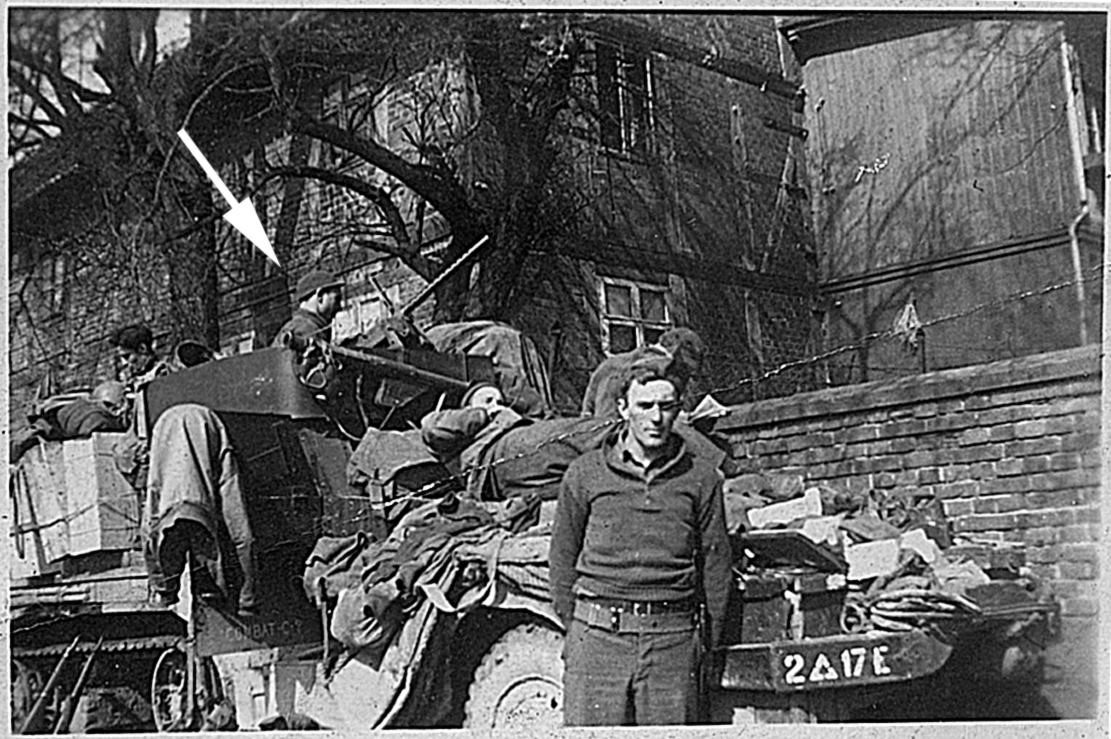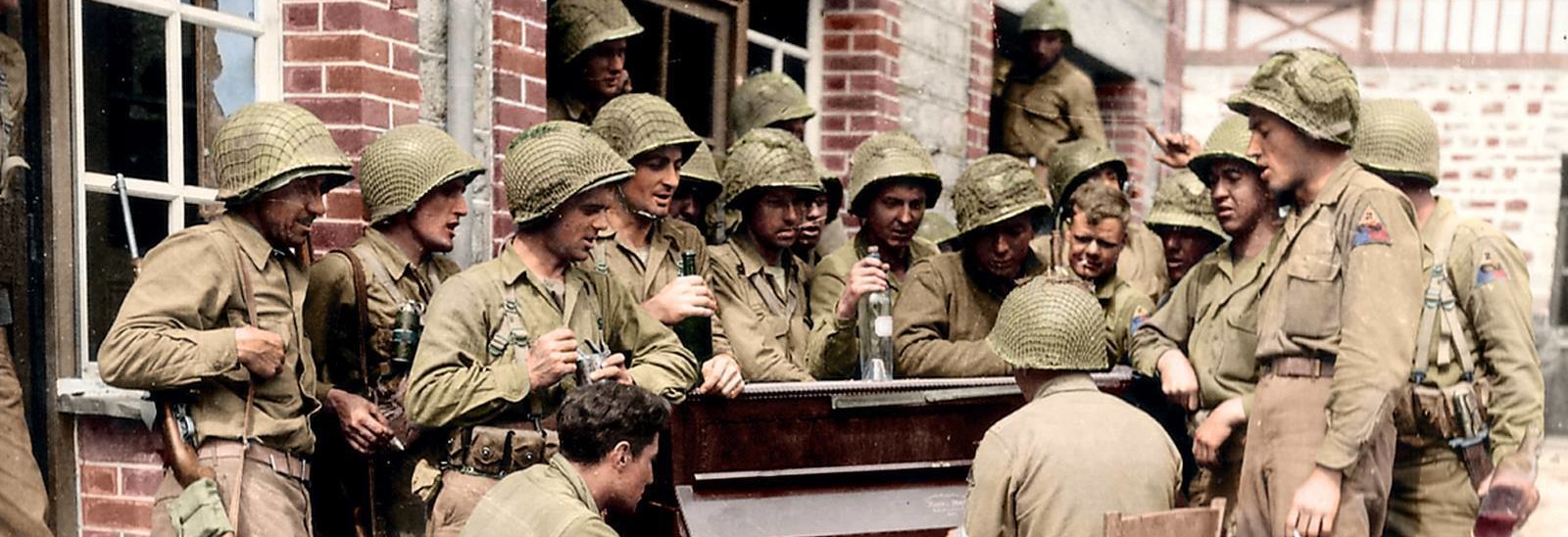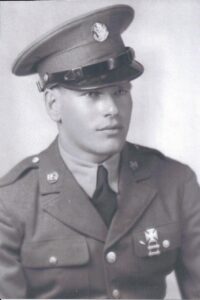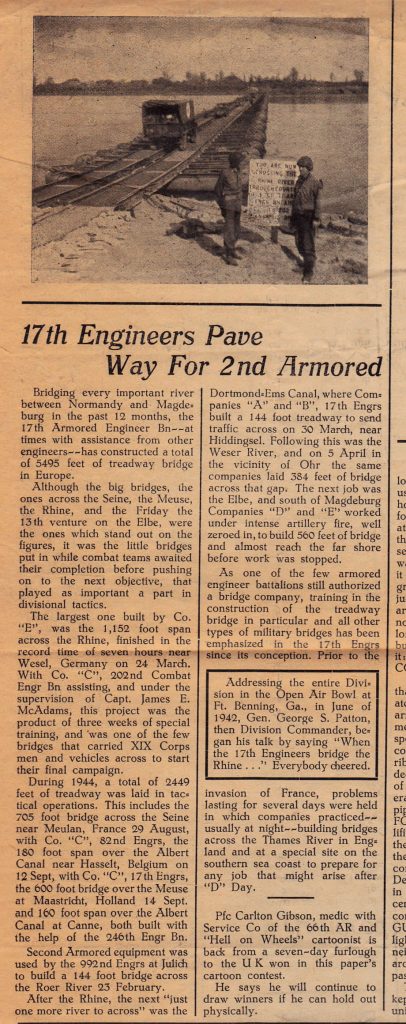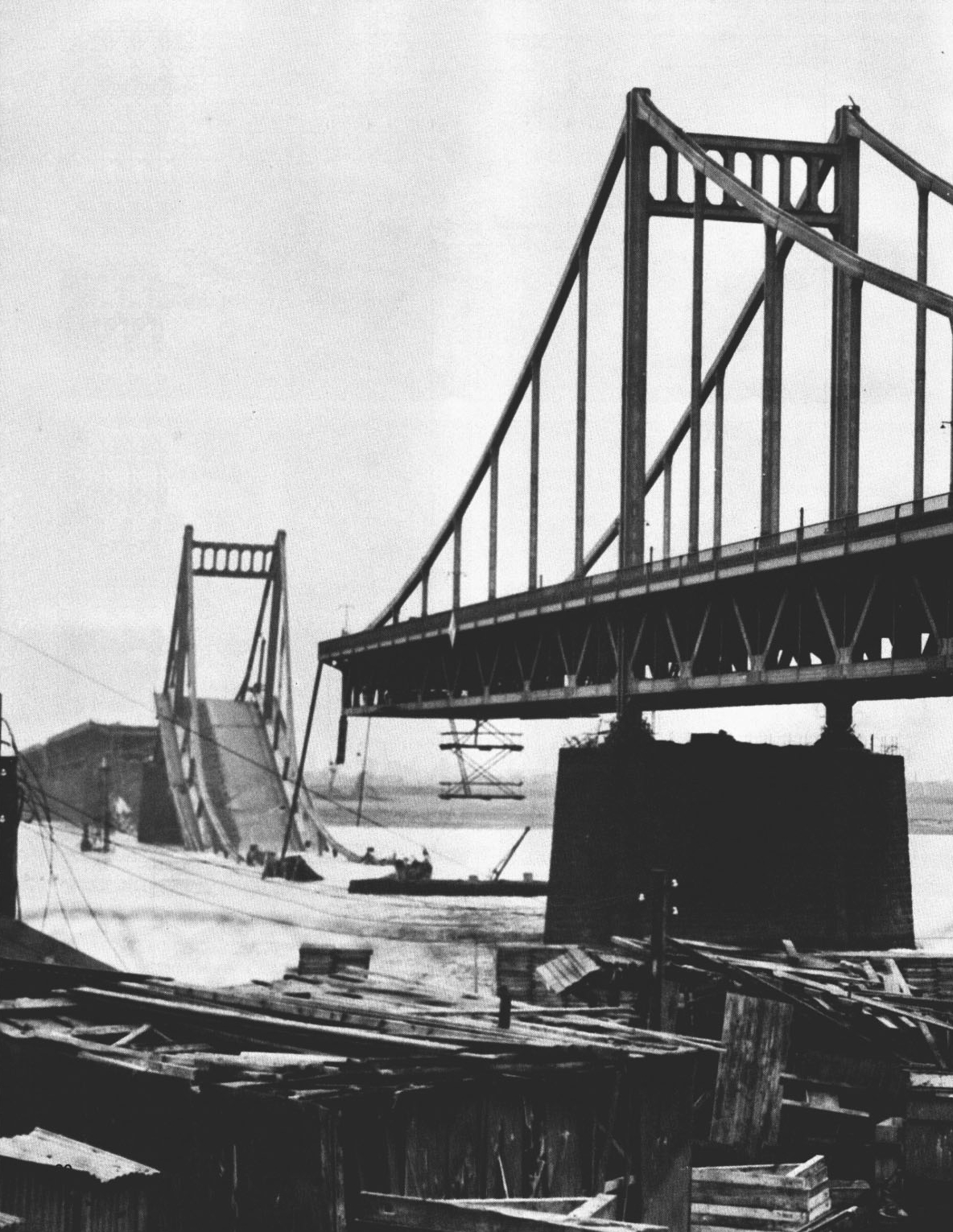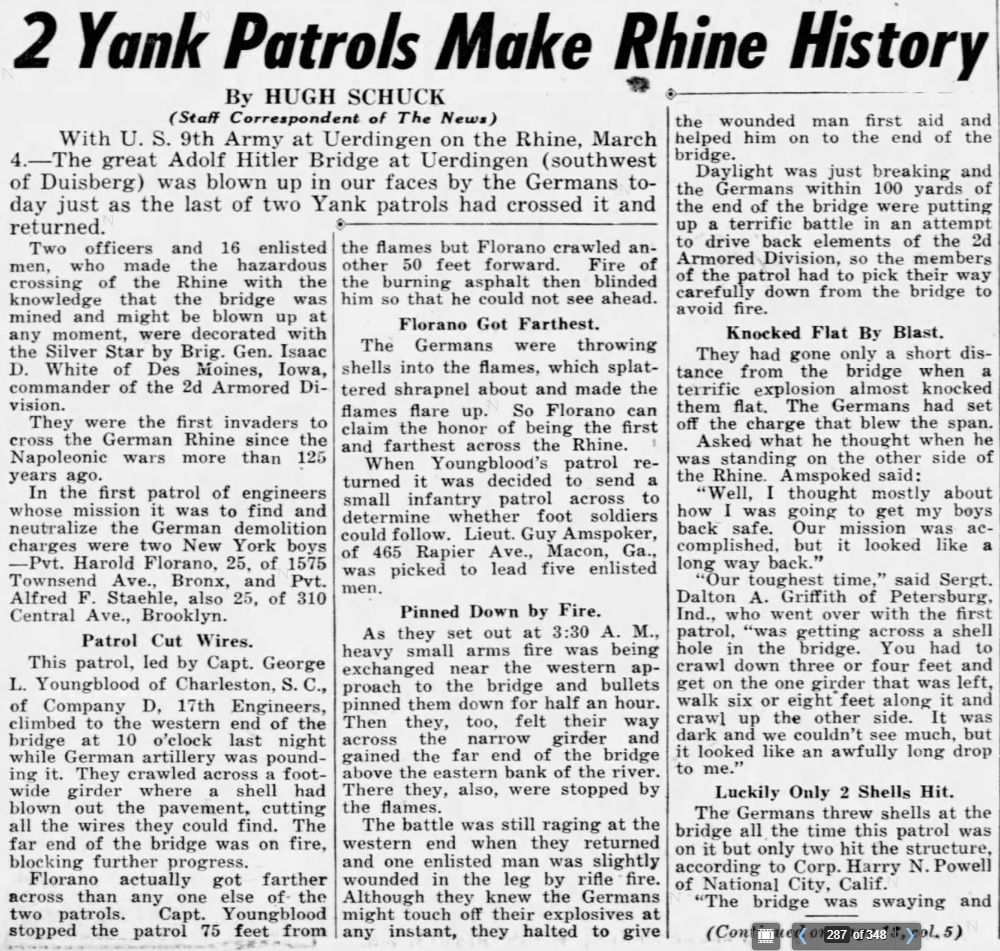Update 06-2021
Preparations for the next operation, in which the division was to follow an Infantry break through across the Roer at Julich and push north—east to the Rhine, was under way early in February. One platoon (18 trucks) of treadway bridge under Lt. Thompson was detached from Co. “E” to the 992nd Tdy Br Co. on 7 February for special training and bridging. This equipment was used for crossing the Roer 23 February near Julich, one man being killed by enemy fire during the operation. (*This is PFC Burnett M “Bud” Payson)
(Edit 1: the Engineer who was Killed in Action on 23 February 1944 is PFC Burnett M “Bud” Payson
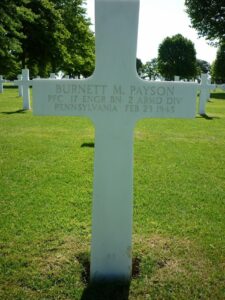
.
During the war, he was involved with constructing a floating bridge over the Roer River, about 150 Yards upstream from the blown out bridge leading into Julich. Intermittent artillery fire was falling on the bridge site and the group of men fastening floats to the bridge. Payson was hit and killed during this barrage.
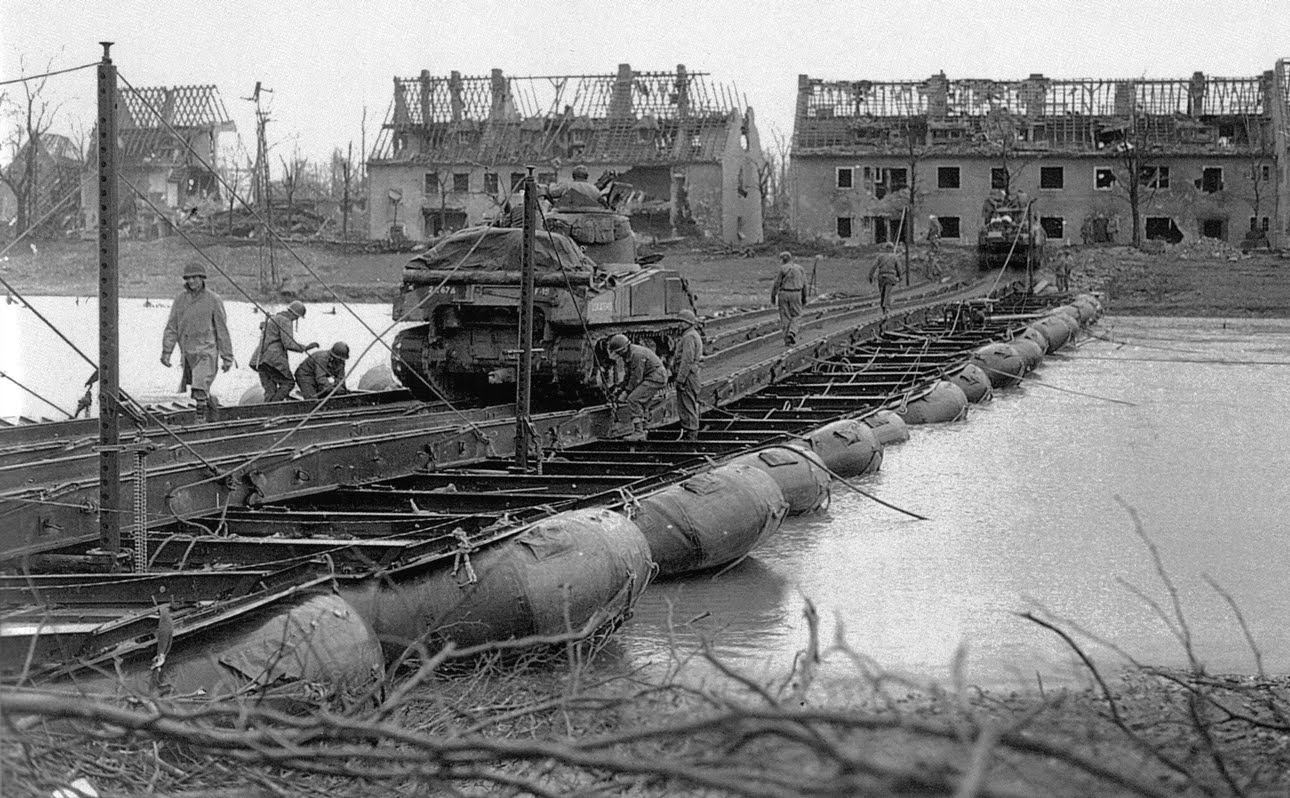
(09-2020)
2nd Armored Crosses the Roer (Ruhr) River in Julich, Germany on 26th of february, 1945
2nd Armored Crosses the Roer (Ruhr) River in Julich, Germany on 26th of february, 1945. Crossing of Halftracks, Jeeps and Shermans of the 67th Armored Regiment. M2 Treadway Pontoon Bridgecrossing built by the 17th Armored Engineer Battalion. By 161th Signal photo Company. Private Geellis.
05.25 2nd Armored moves up
06.07 702nd 702nd tank destroyer battalion
08.08 Sign “To BERLIN With compliments 554 Eng Bn” 25 tons Heavy pontoon brigde.
08.40 Engineer putting “waders” (waterproof coverall)
09.26 The Castle of Julich.
09.40 Armored Dozer
Source and all rights are by NARA.
Read more here: Treadway bridge crossing the Ruhr River on February 26, 1945 at Julich, Germany constructed by the 17th Armored Engineer Battalion, E Company
Lt Thompson, Platoon Leader, had charge of building one of the Tdy Brs at Julich, although his own equipment was not used at that site; rather, it was split up as a reserve and was used in the construction of four different bridges in that sector. Another platoon was dispatched to the 1104th C Engr. Gp. for a mobile reserve, and companies with Combat Commands were given two trucks each.
Assignments of troops for the drive were published, attaching Companies “A” to CC “and “D” to CC “B”, and “C” to CC “R”. On 26 February the companies moved into areas with their respective CCs in and near Aachen, and the next day crossed the river at Julich. Checking and clearing roads and bivouac fields for mines was primary Engineer mission the first days across the Roer. However, the experiences of the Companies were more individual than general before the short, but hot, campaign ended.
(Edit 1: Article about Co E from Hell on Wheels June 13 1945, taken home by T/SGT Gordon Ketchpaw.)
Mine clearance employed most of the personnel]. of Co. “D” as It accompanied CC “B” on the division’s right flank, on February 26 in Julich, the next day at Kalrath, the next at Garzweiler. One platoon laid a short treadway span across the Nord Canal March 1 near Hemmerden, other men cleared mines there and during the next two days at Kaarst and Otzenrath. Then followed the well publicized attempt to cross and sieze the Adolph Hitler Bridge at Urdington, (Uerdingen) the story as related by Capt. George Youngblood who led the patrol on its mission.
More information about the actions on the Adolf Hitler bridge at Uerdingen Germany
“The division hoped to capture the bridge Intact, and two days before we reached it Col. Hinds announced a plan of using some captured Jerry tanks, fill them with Infantry and Engineers, take off across the bridge like we were retreating Jerries, than overpower the guards on the other side and secure the bridge. This fell through, though, and when we arrived at the Autobahn east of Krefeld we were meeting lots of resistance and could not get to the bridge. We pulled back and went in from the south along the Rhine. I had my squad picked and during the afternoon we tried to get on the bridge, but they were fighting on our end of it so It wasn’t possible.
“About 8:30 that night (3 March) I got the squad together again, some of our Infantry was holding the western end of the bridge, we went under the approach, crawled up some steps on its north side to get up on the bridge. I dropped three guards at the end, and the other six and I went on out, cutting every wire we saw whether it looked like demolition or not. We cut six or seven wires. There was a 15 foot hole across the bridge about 100 yards out which would stop any tanks from crossing. We climbed over this hole on the stringers and went on out to the center of the bridge where we had to stop. A fire on the other half of the bridge was burning the asphalt on the roadway, and a big warehouse over there was burning to. Jerry artillery and our own was landing on the far approach, and all around us, and already had weakened most of the supports. So we came back, getting in about 11:30 (2130), The krauts blew up the bridge about 5:00 the next morning”
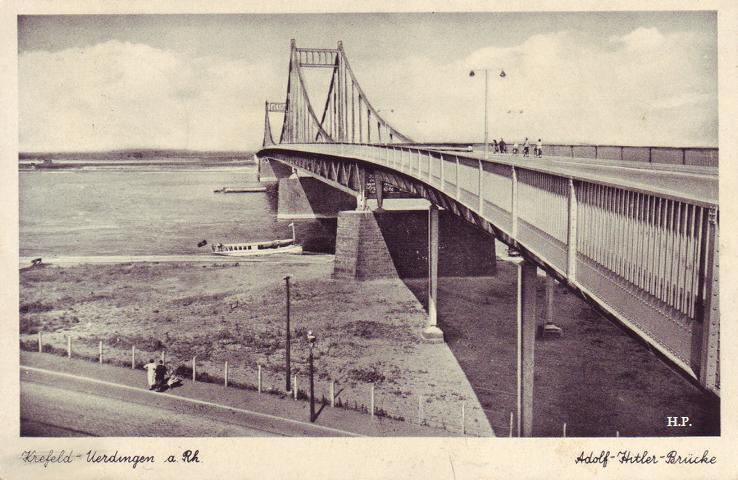
.
Capt-. Youngblood and the nine men, S/Sgt Griff ith, Sgt Steuge, Sgt Boley, Pfc Powell, Pfc. Florano, Pfc Waldall, Pfc Herron, Plc Scules, and Pfc Staehle were decorated with the Silver Star Medal by Gen. White on the spot after their return.
Newspaper article
Daily News (New York, New York, United States of America) · 5 Mar 1945 (newspapers.com)
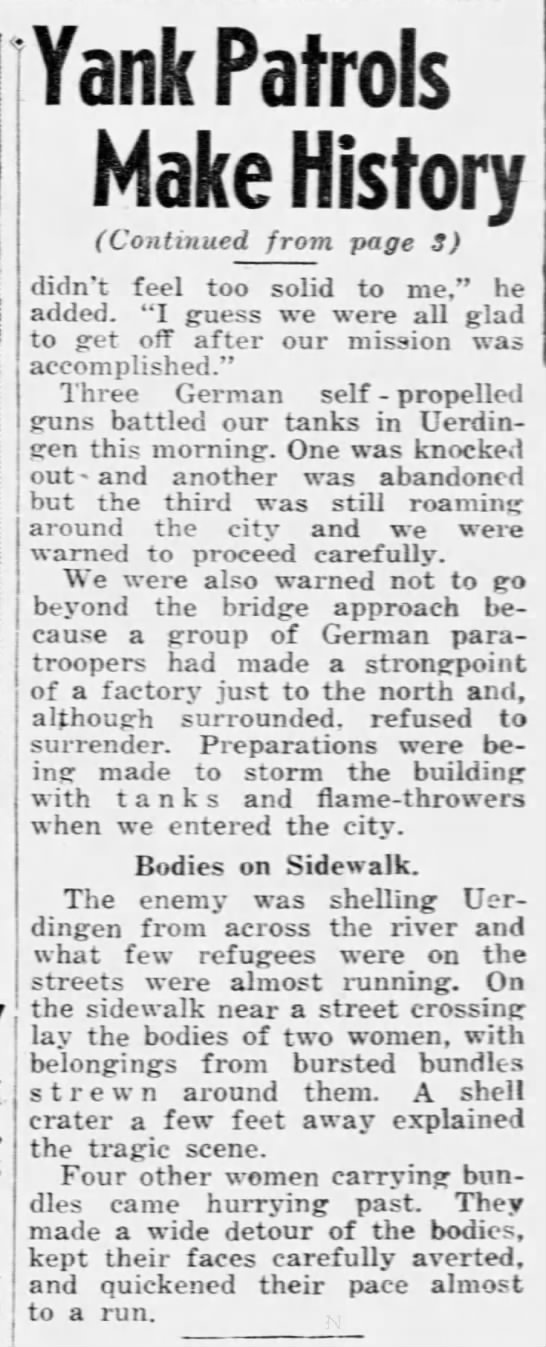
Transcribed newspaper article
2 Yank Patrols Make Rhine History
By HUGH SCHUCK (Staff C pondent of The News) With U. S. 9th Army at Uerdingen on the Rhine, March 4.—
The great Adolf Hitler Bridge at Uerdingen (southwest of Duisberg) was blown up in our faces by the Germans to-day just as the last of two Yank patrols had crossed it and returned.
Two officers and 16 enlisted men, who made the hazardous crossing of the Rhine with the knowledge that the bridge was mined and might be blown up at any moment, were decorated with the Silver Star by Brig. Gen. Isaac D. White of Des Moines, Iowa, commander of the 2d Armored Di-vision. They were the first invaders to cross the German Rhine since the Napoleonic wars more than 125 years ago. In the first patrol of engineers whose mission it was to find and neutralize the German demolition charges were two New York boys —Pvt. Harold Florano, 25, of 1575 Townsend Ave., Bronx, and Pvt. Alfred F. Staehle, also 25, of 310 Central Ave., Brooklyn. Patrol Cut Wires. This patrol, led by Capt. George L. Youngblood of Charleston, S. C., of Company D, 17th Engineers, climbed to the western end of the bridge at 10 o’clock last night while German artillery was pound-ing it. They crawled across a foot-wide girder where a shell had blown out the pavement, cutting all the wires they could find. The far end of the bridge was on fire, blocking further progress. Florano actually got farther across than any one else of- the two patrols. Capt. Youngblood stopped the patrol 75 feet from _ • –
the flames but Florano crawled an-other 50 feet forward. Fire of the burning asphalt then blinded him so that he could not see ahead. Florano Got Farthest. The Germans were throwing shells into the flames, which splat-tered shrapnel about and made the flames flare up. So Florano can claim the honor of being the first and farthest across the Rhine. When Youngblood’s patrol re-turned it was decided to send a small infantry patrol across to determine whether foot soldiers could follow. Lieut. Guy Amspoker, of 465 Rapier Ave., Macon, Ga., was picked to lead five enlisted men.
Pinned Down by Fire. As they set out at 3:30 A. M., heavy small arms fire was being exchanged near the western ap-proach to the bridge and bullets pinned them down for half an hour. Then they, too, felt their way across the narrow girder and gained the far end of the bridge above the eastern bank of the river. There they, also, were stopped by the flames. The battle was still raging at the western end when they returned and one enlisted man was slightly wounded in the leg by rifle fire. Although they knew the Germans might touch off their explosives at any instant, they halted to give
the wounded man first aid and helped him on to the end of the bridge. Daylight was just breaking and the Germans within 100 yards of the end of the bridge were putting up a terrific battle in an attempt to drive back elements of the 2d Armored Division, so the members of the patrol had to pick their way carefully down from the bridge to avoid fire. Knocked Flat By Blast. They had gone only a short dis-tance from the bridge when a terrific explosion almost knocked them flat. The Germans had set off the charge that blew the span. Asked what he thought when he was standing on the other side of the Rhine. Amspoked said: “Well, I thought mostly about how I was going to get my boys , back safe. Our mission was ac-complished. but it looked like a long way back.” “Our toughest time,” said Sergt. Dalton A. Griffith of Petersburg. Ind., who went over with the first patrol. “was getting across a shell hole in the bridge. You had to crawl down three or four feet and get on the one girder that was left, walk six or eight feet along it and crawl up the other side. It was dark and we couldn’t see much, but it looked like an awfully long drop to me.” Luckily Only 2 Shells Hit. The Germans threw shells at the bridge all, the time this patrol was on it but only two hit the structure, according to Corp. Harry N. Powell of National City, Calif. “The bridge was swaying and
(Con Cat 16)
Yank Patrols Make History
(Continued from page 3) didn’t feel too solid to me,” he added. “I guess we were all glad to get off after our mission was accomplished.” Three German self – propelled guns battled our tanks in Uerdin-gen this morning. One was knocked out- and another was abandoned but the third was still roaming-around the city and we were warned to proceed carefully. We were also warned not to go beyond the bridge approach be-cause a group of German paratroopers had made a strongpoint of a factory just to the north and, although surrounded. refused to surrender. Preparations were be-ing made to storm the building with tanks and flamethrowers when we entered the city. Bodies on Sidewalk. The enemy was shelling Uerdingen from across the river and what few refugees were on the streets were almost running. On the sidewalk near a street crossing lay the bodies of two women, with belongings from bursted bundles strew n around them. A shell crater a few feet away explained the tragic scene. Four other women carrying bun-dles came hurrying past. They made a wide detour of the bodies, kept their faces carefully averted, and quickened their pace almost to a run.
Silver Star recieved by 17th Engineer Private Harold Florano
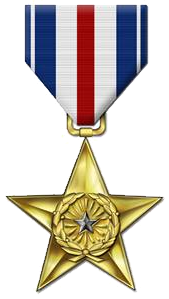
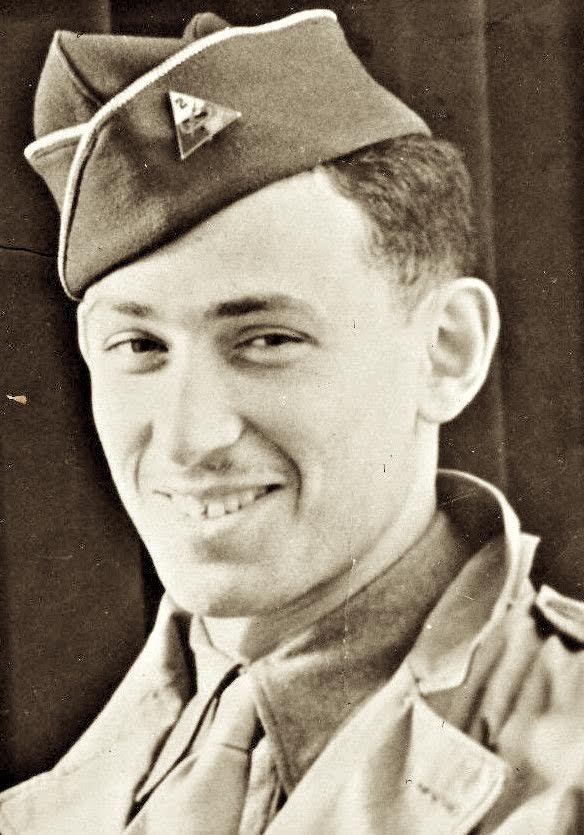
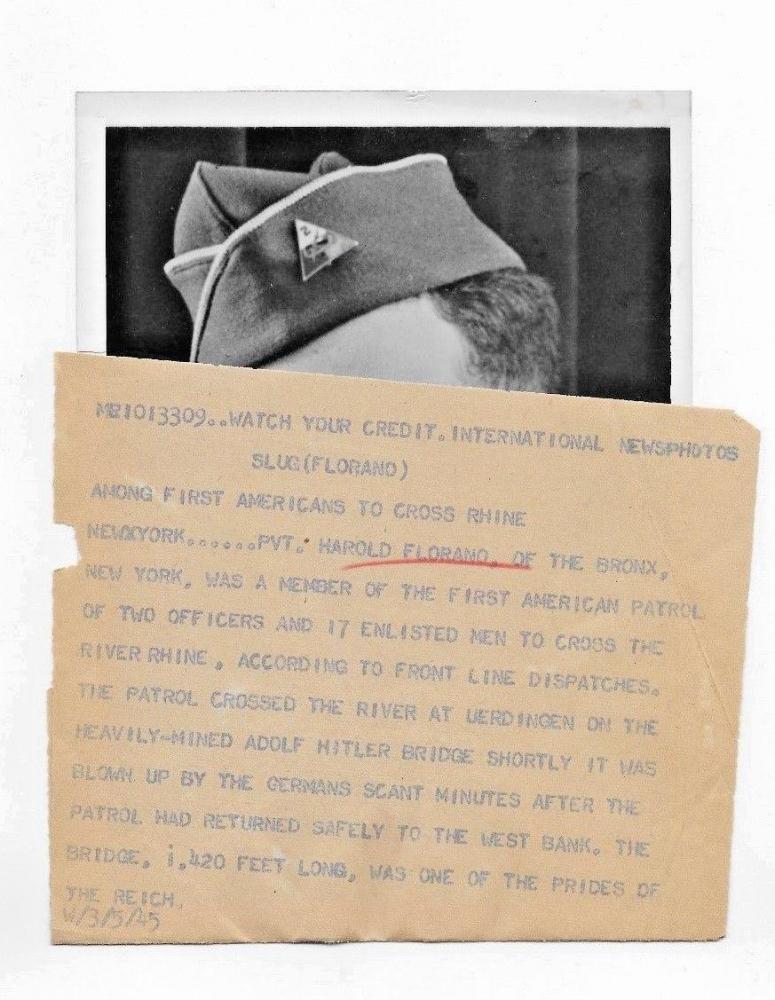
Text on the Backside”:
Among the First Armericans to cross Rhine
New York…….PVT Harold Florano, of the Bronx, New York, was a memner ot the first American patrol of two officers and 17 enlisted men to cross the Rhine, according to Frontline dispatches, the patrol crossed the River at Uerdingen on the heavely mined Adolf Hitler bridge shorltly it was blown up by the patrol had returned safely to the west bank. The bridge is 420 feet long, was one of the prides of the Rech. 3/5/1945
(source Miliatria Forum-com)
Silver Star recieved by Captain George Lawrence Youngblood
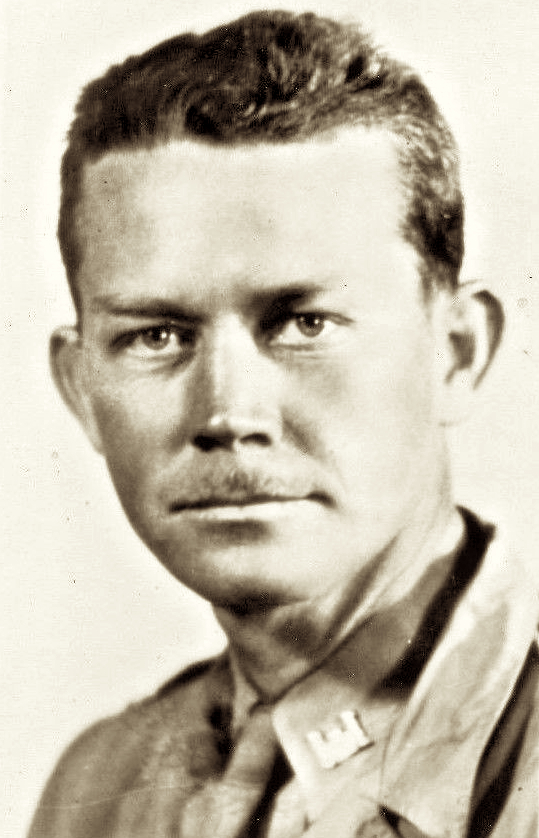
AMONG THE 19 SOLDIERS who were awarded the Silver Star for heroism for attempting to prevent the Nazis from blowing up the Adolf Hitler Bridge which spans the Rhine at Uerdingen, Germany, are: Capt. George Youngblood (top), of Charleston, S. C.; Lt. Guy
The Daily Record (Long Branch, New Jersey, United States of America) · 10 Mar 1945
Amspoker (center), of Macon and Pvt. Harold Florano of the Bronx, N. Y. All of the patrol returned to bank safely.
“06-2021”
AN ATTEMPT TO SEIZE THE ADOLH HITLER BRIDGE, RHINE RIVER UERDINGEN, GERMNY BY 3D BATTALION, 67TH ARMORED REGIMENT, 2D ARMORED DIVISION 3 MARCH 1945 – written by LT. COL. WILSON M. HAWKINS, CAVALRY
p124201coll2_431The hottest engagement during this drive for Co. “C” was at Schiefbahn, a town passed through by CC “A” and turned over to CC “R” to The 1st Platoon outpost in houses on the north of town, guarding an Infantry CP. Lt. Cline’s 2nd Platoon was In the center of town, and Co. Hq. on the southern edge. Shortly after dark a Bn strength infantry attack supported by nine tanks was launched by the 130th Pz Lehr Div from the north west, Among these first hit, the 1st Platoon fought the enemy as well as they could with small arms. One man, pvt Frank Kuczera kept firing even though shot through the face himself, and a buddy, pfc Galgan distinguished themselves enough to win the Silver Star. These and a few others were led by their platoon leader through a gauntlet of fire to escape, but 2 men, including most of the NCOs found their shelter completely surrounded by Tiger tanks and were forced to surrender. Meanwhile the 2nd Platoon also was coming under heavy fire, one house being blown down on Sgt Bristain’s squad, and the attempt of Pfc Edward Hasse to drive several vehicles from the crowded main square under fire earned him the Silver Star.
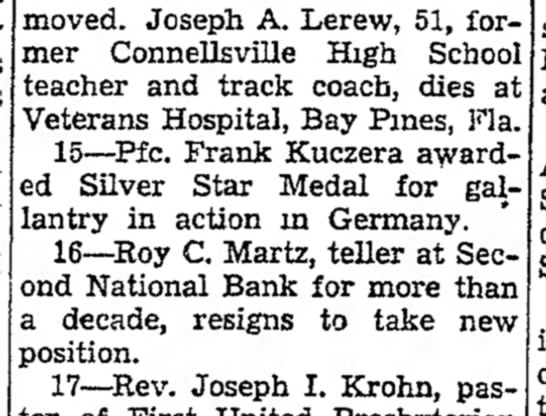
Artillery fire on the southern end of town killed one of the soldiers with Co. Hq, but the enemy finally was forced from town. With the other loading Combat Command, Co “A” had its platoons supporting the task forces, and Co.. Hq, in moving to freshly occupied towns took 15 prisoners from cellars of buildings in Kleinbroich, and three more the following day (2 march) from a wooded area near Giesenend. Their water point was damaged by AP bombs that night, and the Co. “B” point set up to replace It. The next two nights the company outposted TDs in the vicinity of Krefeld.
(Edit: on March 3 1945 PFC Paul F Snider Died of Wounds)
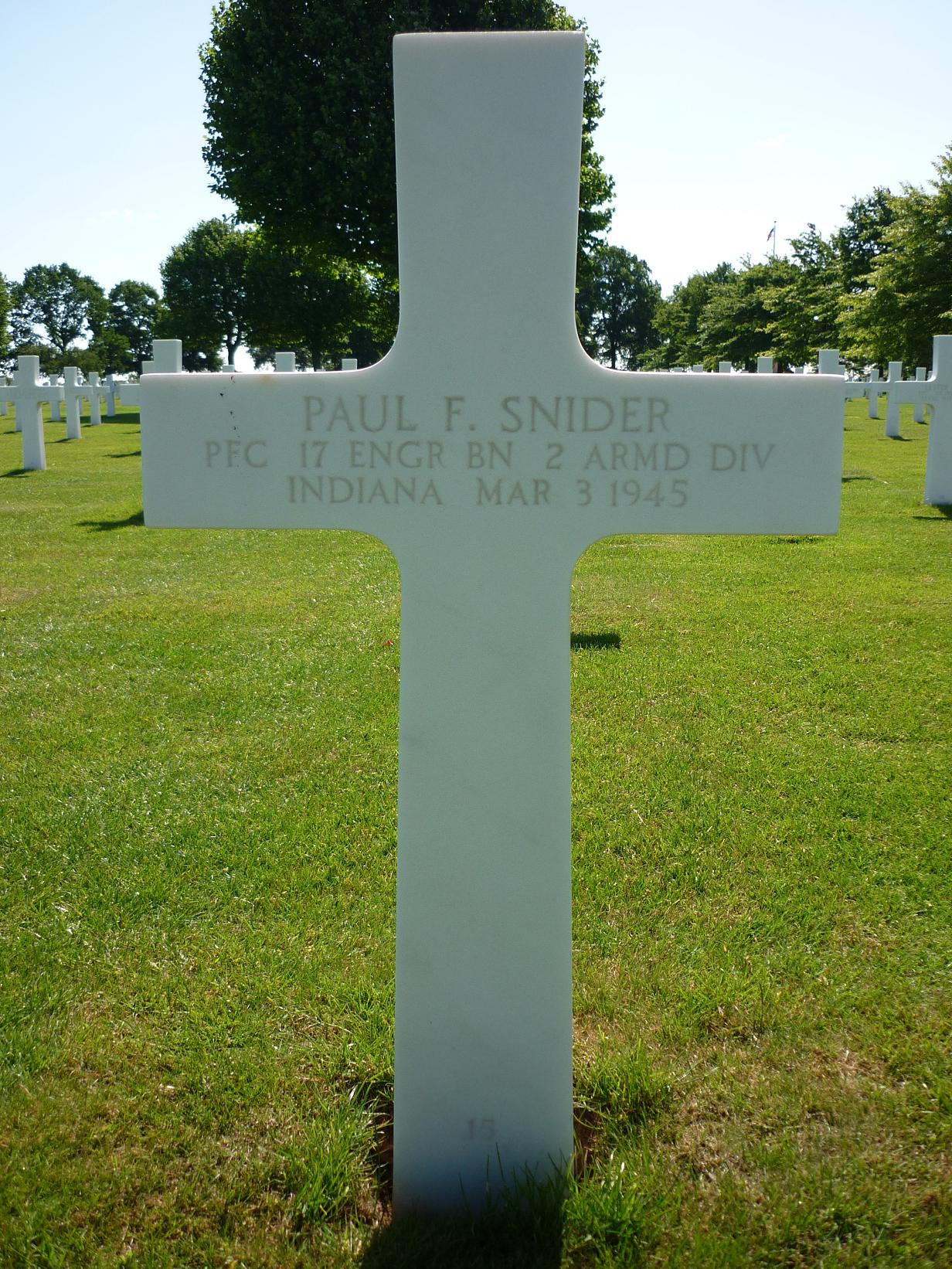
Co. “B”, under Bn control, in the first days of the push cleared several roads and the railroad yards of Julich of mines, and the night of 1 March built a 36 foot tread way bridge across the Nord Canal. After the bridge was competed the group was fired on from a nearby enemy AA garrison, one shot hitting a bridge truck. The enemy, evidently thinking a large force was at hand, took off to the north, and the Engineers destroyed four 75 mm and one 20 mm guns. The 3rd Platoon of Co. “B”, working with “D” Co., in an action near Bosinghoven, captured 21 prisoners, suffering two casualties.
